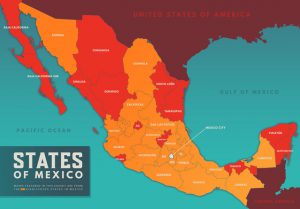Mexican Masks
Masking is a universal phenomenon. In most cultures around the world masks are worn to protect, to symbolize social status, to exalt, to mock, and to amuse. They transport the wearer from the world of the ordinary into a world which is otherwise out of reach, permitting the wearer to become an actor on the stage of his or her dreams – to act out fears and fantasies repressed by convention in a ritual condoned by society. Masks serve as vehicles through which tensions are relaxed, dilemmas resolved, social taboos bridged, and lines of communication established.
Marion Oettinger, Jr. Dancing Faces: Mexican Masks in a Cultural Context. Washington: Meridian House International, 1985:13.
Through the ages, people in most cultures have employed masks and art as a means of expressing themselves, adopting different identities and powers, communing with the unknown, and for social bonding and entertainment. Masks in Mexico have been used for thousands of years to portray objects and themes as varied as plants and animals; old and young; ethnic, political, economic, and social differences; and especially the fanciful and supernatural. On almost any day, in one community or another, people in masks may be found dancing in celebration of their town’s patron saint or for some other religious holiday. While the fantastical nature of these masks has been adopted and adapted in many other art forms in Mexico, this exhibit shows how masks have been used in religious celebrations, for social commentary, for personal protection, and increasingly as an art form.
 Divine Face/Santiago/Jaguar of the Night |
 Masks featured in this exhibit are from 19 states highlighted in orange on this map. |


